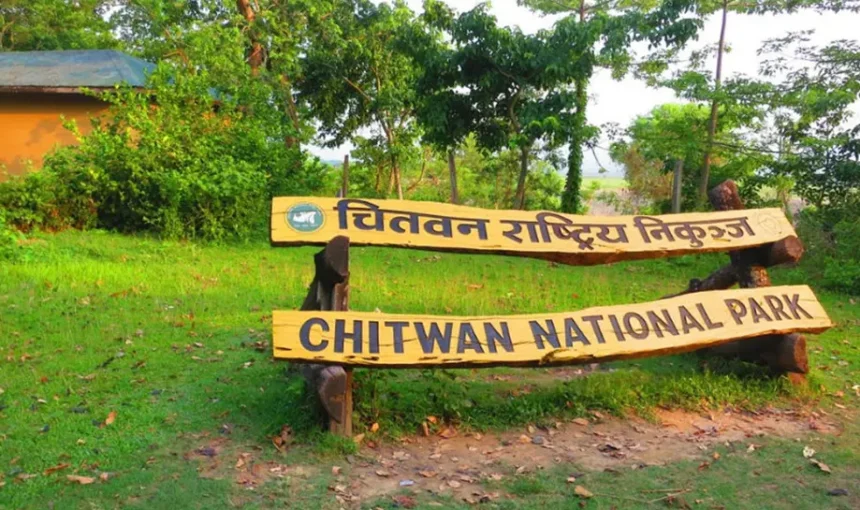Table of Contents
Chitwan National Park, Situated in southwestern Nepal, Chitwan District remains a jewel for its scenic natural beauty and rich biodiversity. It is spread across a vast area of 2238.39 square kilometres, with Bharatpur serving as an immensely lively city that is ranked fifth in the country and the headquarters of this region.
The Chitwan National Park, in Nepal, is an expansive sanctuary that spans 932 square kilometres. It is home to various ecosystems and provides shelter for an extraordinary range of wildlife.
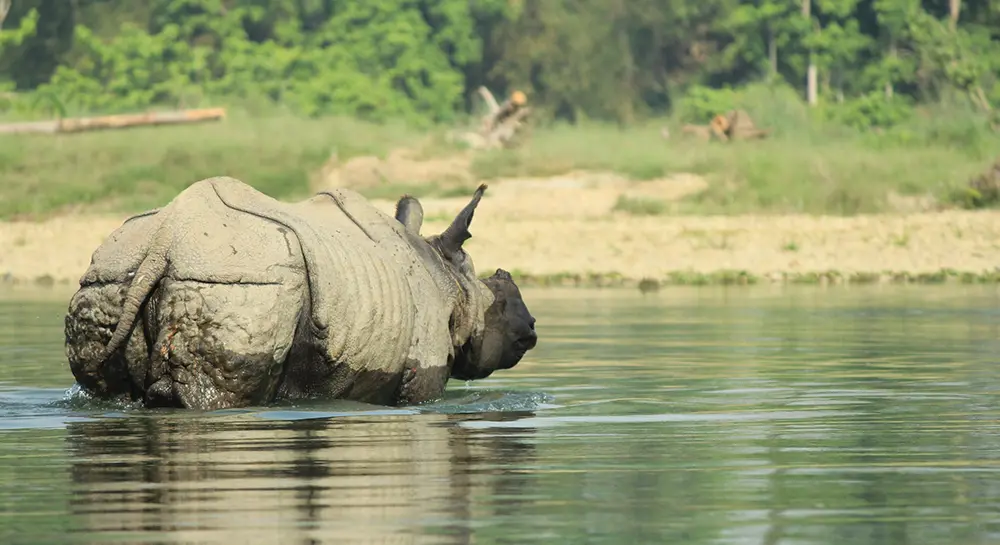
Nepal’s First National Park and UNESCO World Heritage Site
Chitwan National Park is the first national park in Nepal, representing an early conservation effort in the country. It was made a UNESCO World Heritage Site in Nepal in 1984 and exhibits landscapes from lowland river plains at less than 100 metres above sea level to forests of the Churia Hills, which rise to about 815 metres in elevation. This park supports various ecosystems and the livelihoods of surrounding communities.
These habitats support a greater diversity of fauna, making Chitwan an important sanctuary for Nepal’s biodiversity. The park is also renowned for species such as the one-horned rhinoceros, royal Bengal tiger, and gharial crocodile. All in Chitwan National Park stands for the glory of Nepal due to its natural heritage and conservation.
A Rich Wildlife Sanctuary and Biodiversity Hotspot
Chitwan National Park is renowned for its extraordinary wildlife. The types of animals it includes are mammals, fish, birds, reptiles, and amphibians. The foremost of them all attract tourists from all over the world: the one-horned rhinoceros, shy royal tiger, and rare gharial crocodile. Adding to Chitwan’s appeal is the fact that it is home to the wild Asian elephant, the largest land mammal, and the pygmy shrew, one of the smallest.
Such a wonderful array of species in thriving habitats such as grasslands, forests, and wetlands makes Chitwan National Park a genuine biodiversity sanctuary. It gives the visitor a rare opportunity to see a large variety of animals in their natural environment, which makes it an absolute must-preserve locality for all nature lovers and
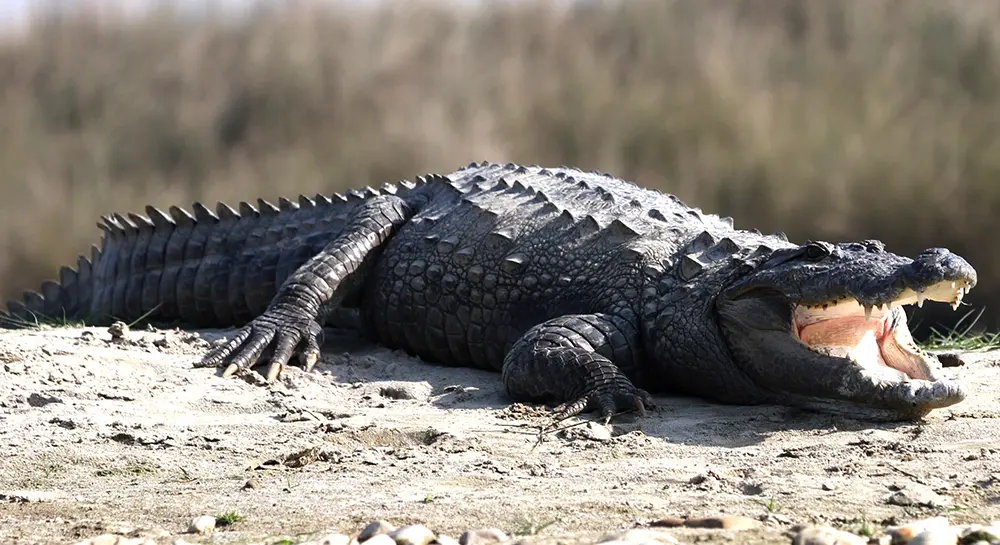
Chitwan National Park: A Birdwatcher’s Paradise
Chitwan National Park is a true dream destination for birdwatchers. Home to over 540 species of birds, it offers an incredible variety of colourful and rare birds across its forests, wetlands, and riverbanks. Whether you are an expert birder or a nature lover, Chitwan’s diverse habitats provide endless opportunities to spot vibrant birds in their natural surroundings. From the striking kingfishers to elusive migratory species, every visit promises unforgettable sightings.
Beyond birdwatching, Chitwan offers a peaceful escape into nature with serene canoe rides, jungle walks, and quiet mornings filled with birdsong. The park’s rich ecosystem supports a vibrant bird population, making it one of Nepal’s best spots for avian enthusiasts. Whether you visit during the dry winter or the lush monsoon season, Chitwan’s birdlife never fails to amaze, making it a must-visit haven for anyone passionate about birds and wildlife.
Exploring Chitwan National Park Through the Seasons
Chitwan National Park is the location for several exciting wildlife adventures and scenes. Jeep safaris traverse large distances, and elephant-back safaris offer a unique way to see animals such as the one-horned rhinoceros, the Royal Bengal tiger, and wild elephants. Guided jungle walks are designed to give an intimate experience of amazing flora and fauna, while canoe rides are quiet for wildlife viewing. Each and every safari pulls deeper into the wild heartland of Nepal.
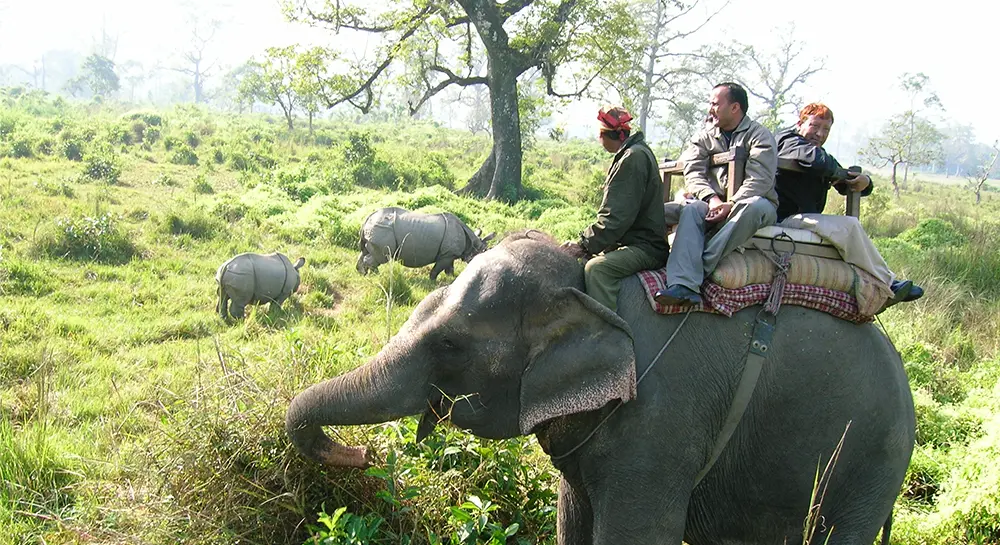
Summer in Chitwan (March–June)
The summer is warm and dry in Chitwan, with daytime temperatures rising up to 43°C. With shrinking water resources, wildlife congregate by whatever few ponds and rivers remain—making wildlife sightings much easier here in Chitwan. Early mornings and late evenings are the best times for game drives and jungle safaris because that is when the animals are most active.
Be sure to wear breathable clothes, a wide-brimmed hat, sunglasses, and lots of drinking water. This summer gives you clear skies and green grasslands and is the perfect time for photographers who wish to capture rhinos, deer, and elephants in Chitwan National Park basking in golden light.
Monsoon in Chitwan (June–September)
The heavy rains, brought by the monsoons over Chitwan, commence in mid-June and last until September. About 80% of the annual rainfall graces the months, and it converts grassy plains into lush, verdant splendour. Although going to Chitwan in the monsoon weather means muddy During this time, trails may be closed occasionally, and nature puts on its most beautiful drama.
Sightings of large animals become rare but rewarding, as these animals tend to hide in the cover of forests. Birdwatchers delight in migratory species coming in with the rains. So whatever you do, pack waterproof stuff—a raincoat, quick-drying clothes, and waterproof bags for electronics—to enjoy canoe rides in peace and quiet and less crowded safaris.
Winter in Chitwan (October–February)
Chitwan National Park during winter enjoys cool, comfortable days (20–25°C), followed by clear skies. The morning mist brings magic to the winter safaris in Chitwan, whereas in that month of November, one can also see the faraway Great Himalayan Range. Daylight sees wildlife in full action, rewarding jeep safaris and elephant rides.
One should layer; for example, a light sweater or jacket in the early mornings, but something warm for the afternoons. It is the best combination of wildlife viewing conditions and comfortable weather; hence, winter is the peak season for travelers seeking both adventure and comfort is at the premier wildlife sanctuary in Nepal.
Complete Safari Experiences in Chitwan National Park
Chitwan National Park is a truly unforgettable adventure that allows you to immerse yourself in the park’s stunning landscapes and encounter its rich wildlife, offering multiple ways to explore and connect deeply with nature’s wonders.
Sunrise & Sunset Views in Chitwan
Experience the magical beauty of Chitwan National Park at dawn and dusk. Watch the golden sunrise over misty grasslands and the vibrant sunset over the jungle horizon. These peaceful moments offer perfect photo opportunities and a serene end to your adventurous day in the wild.

Elephant Safari in Chitwan
Enjoy a thrilling elephant-back safari through Chitwan National Park. From this elevated vantage point, spot one-horned rhinos, deer, wild boars, and, if lucky, a Bengal tiger. The slow, steady ride offers an immersive and panoramic view of the dense forest and its incredible wildlife.
Jungle Walk in Chitwan
Embark on a guided jungle walk to explore Chitwan’s rich forest ecosystem up close. Led by expert naturalists, this trek offers intimate encounters with flora and fauna, insightful wildlife spotting, and a more profound understanding of the park’s biodiversity and conservation efforts in a peaceful, natural setting.
Birdwatching in Chitwan
Grab your binoculars and discover the vibrant birdlife of Chitwan National Park. Explore diverse habitats like forest canopies, wetlands, and riverbanks to spot colorful and rare bird species. This peaceful activity offers unforgettable sightings for bird lovers and nature enthusiasts alike.
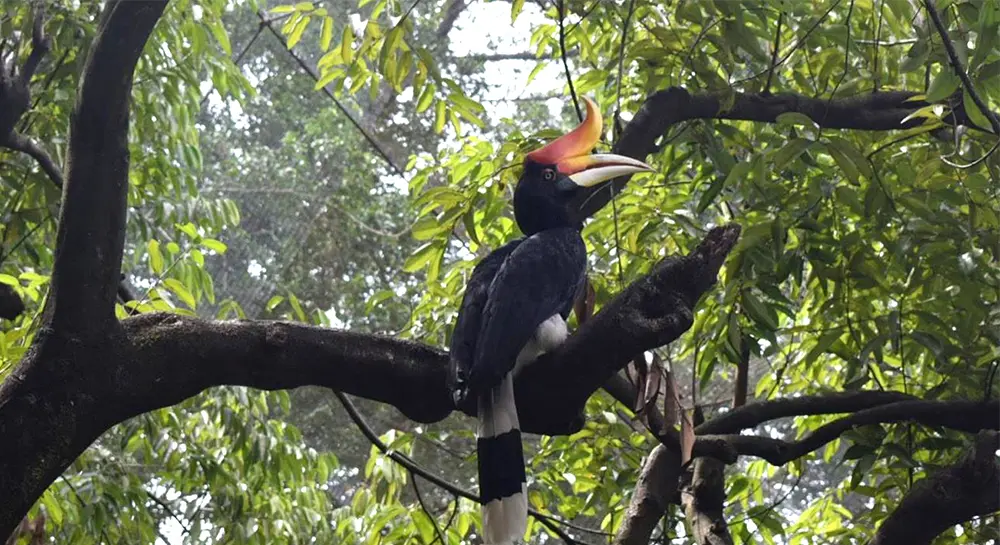
Canoe Ride in Chitwan
Glide quietly along Chitwan’s rivers on a serene canoe ride. Paddle through peaceful waters where you may spot gharial crocodiles sunning themselves on the riverbanks, along with other wildlife, offering a unique and tranquil way to experience the park’s natural beauty up close.
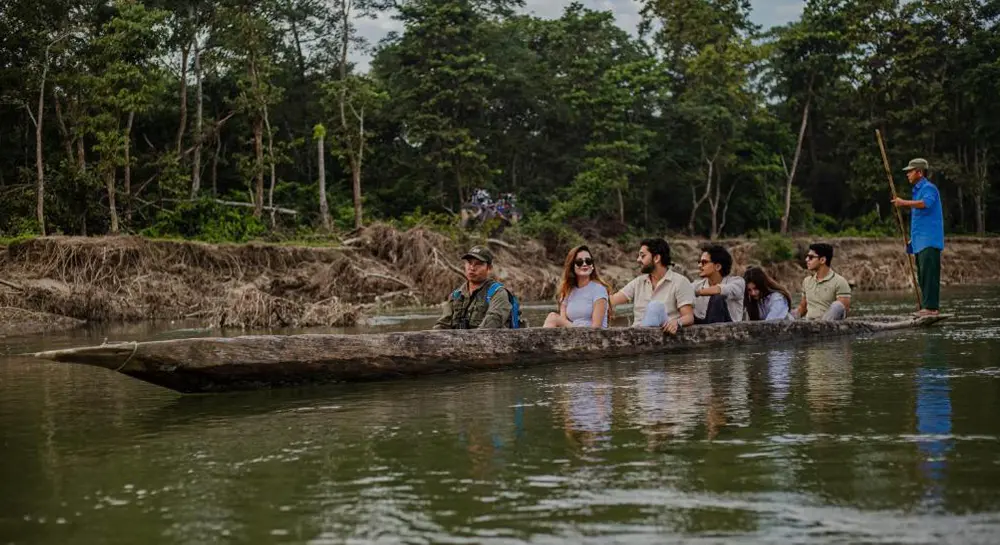
Jeep Safari in Chitwan
Experience an exciting, fast-paced jeep safari through Chitwan National Park. Covering more ground than other safaris, it boosts your chances of spotting diverse wildlife—including rhinos, deer, and tigers—across varied terrains, making it an adventurous way to explore the park’s vast wilderness.
Tharu Village Visit in Chitwan
Discover the rich culture of the Tharu people, who have lived in harmony with nature for centuries. Visit their traditional villages to experience authentic lifestyles, vibrant customs, and experience warm hospitality while gaining insight into a unique community that is deeply connected to the Chitwan landscape.
Cultural Performances in Chitwan
Experience the vibrant cultural heritage of the Tharu community through traditional dances and rituals. These lively performances celebrate indigenous customs, offering visitors a captivating glimpse into the rich traditions and spirit of the local people living in harmony with nature.

Elephant Bathing in Chitwan
Join or observe the heartwarming ritual of elephant bathing by the river, where caretakers lovingly wash these gentle giants. This interactive experience offers a unique chance to connect with Nepal’s majestic elephants and witness their daily care in a natural, serene setting.
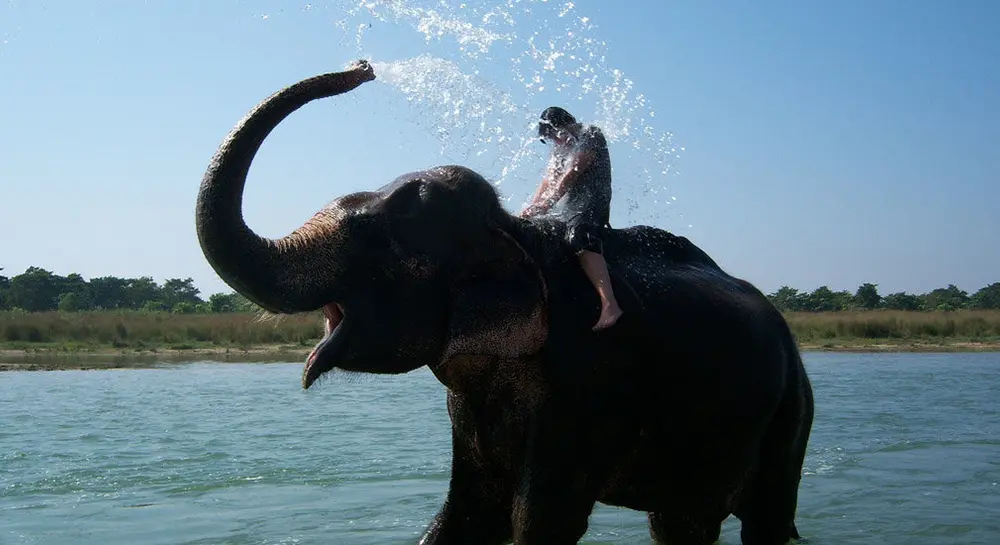
Elephant Breeding Centre in Chitwan
Visit the Elephant Breeding Centre to see adorable young elephant calves and learn about Nepal’s dedicated conservation efforts. This educational experience highlights the importance of protecting these majestic animals and supports ongoing wildlife preservation initiatives in the region.
Cultural Encounters and Ecotourism in Chitwan
Chitwan National Park historically has served as a wildlife haven and is presently an active cultural and ecological meeting point. The native Tharu community, which has coexisted with nature for generations, welcomes the visitor to experience the peculiarities of their lifestyle.
The village tours, home visits, and cultural performances provide opportunities for guests to fathom traditional Tharu culture and ways of life. Thus, these opportunities create a mutually beneficial situation where visitors gain an understanding of the local culture and the communities benefit from sustainable tourism.
Being at the heart of conservation practices and environmental protection shows how parks have an important role. Special efforts go into protecting animals and sensitive ecosystems. The park also provides education and promotes stewardship so that wildlife and local culture can thrive side by side.
In return, the park offers better prospects for conservation of Nepal’s rich natural heritage and enhancement of people’s livelihoods. In doing so, Chitwan National Park truly stands out as a shining example of the possibilities for conservation and rural community development to forge a sustainable future.
Conservation and Sustainable Future
Chitwan National Park is a special place where wildlife, culture, and nature come together in a unique way. Here, you can see amazing animals like rhinos and tigers, explore beautiful forests and rivers, and experience the rich traditions of the local Tharu people.
The park offers something for everyone, whether you want an exciting safari adventure, a peaceful walk in nature, or a chance to learn about wildlife and conservation. It’s also an important example of how protecting nature and supporting local communities can work hand in hand. Visiting Chitwan means enjoying incredible sights while helping preserve this beautiful part of Nepal for future generations.

